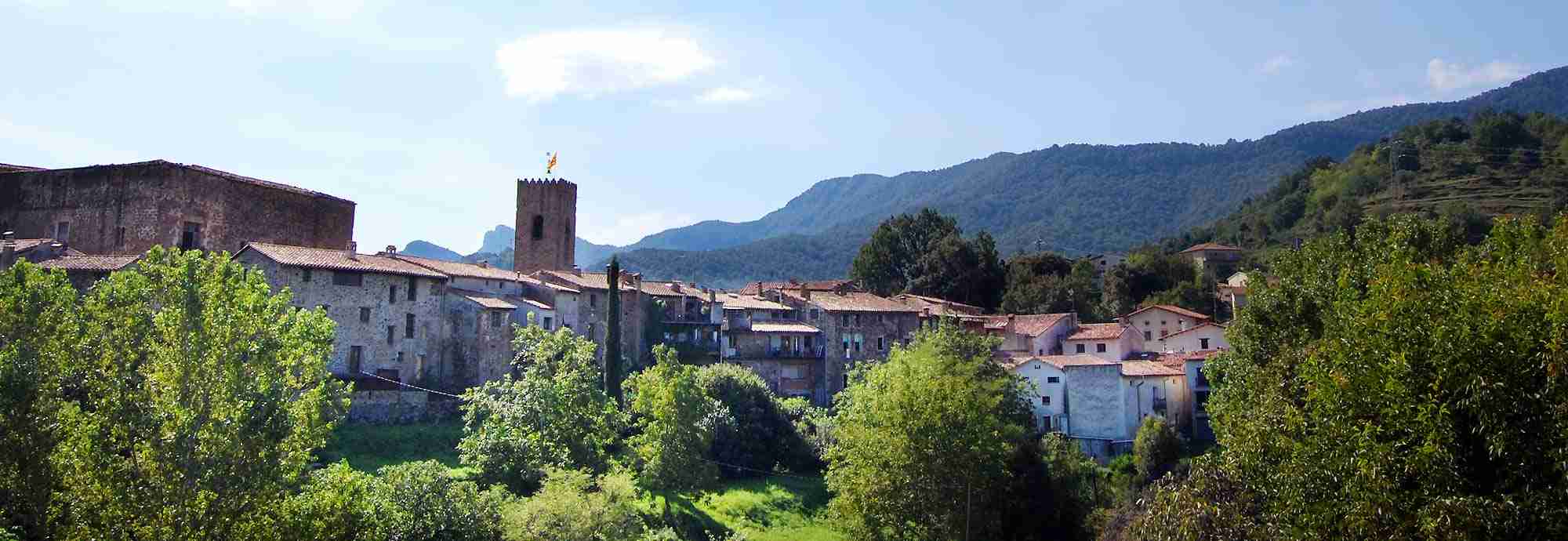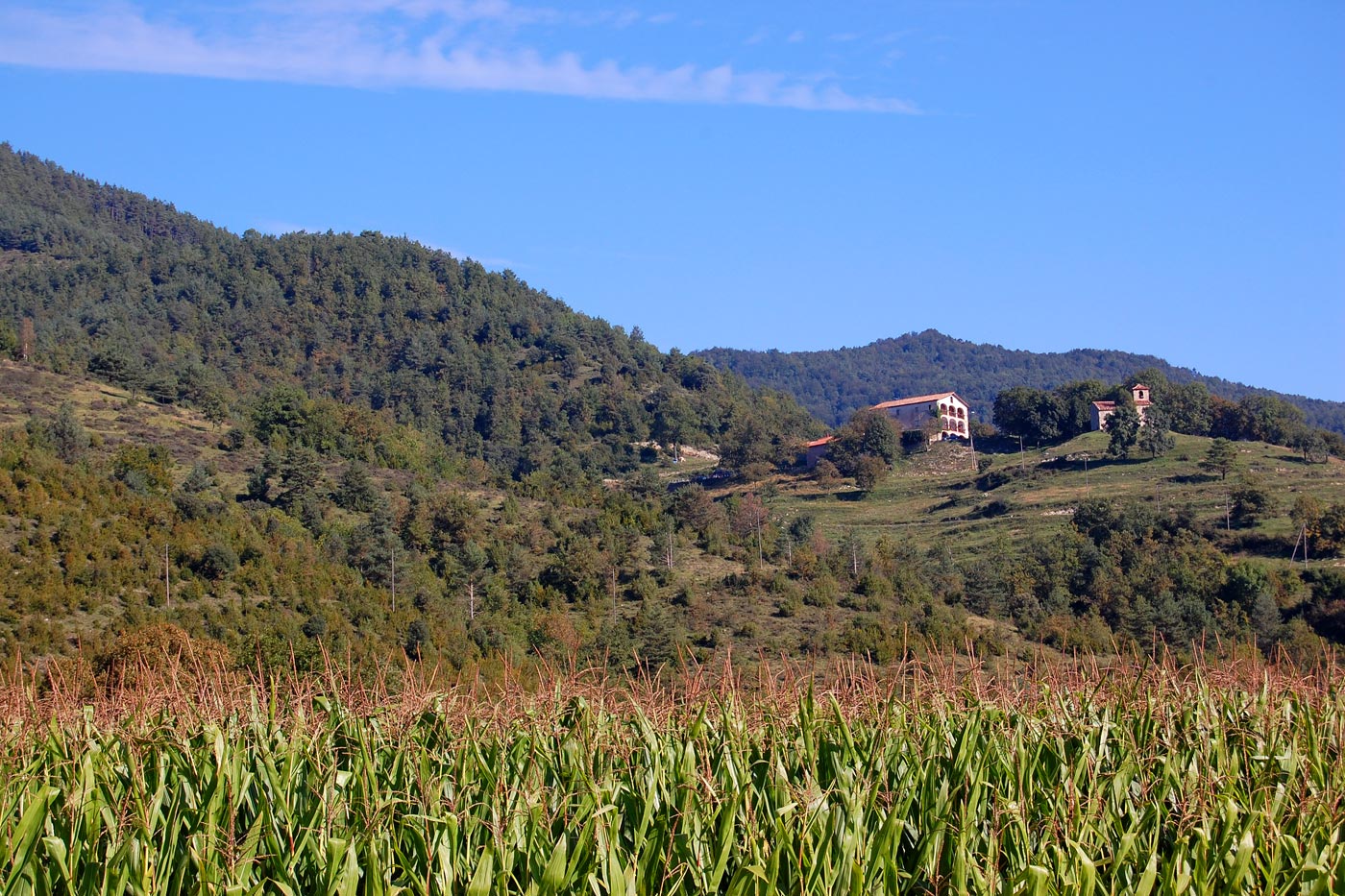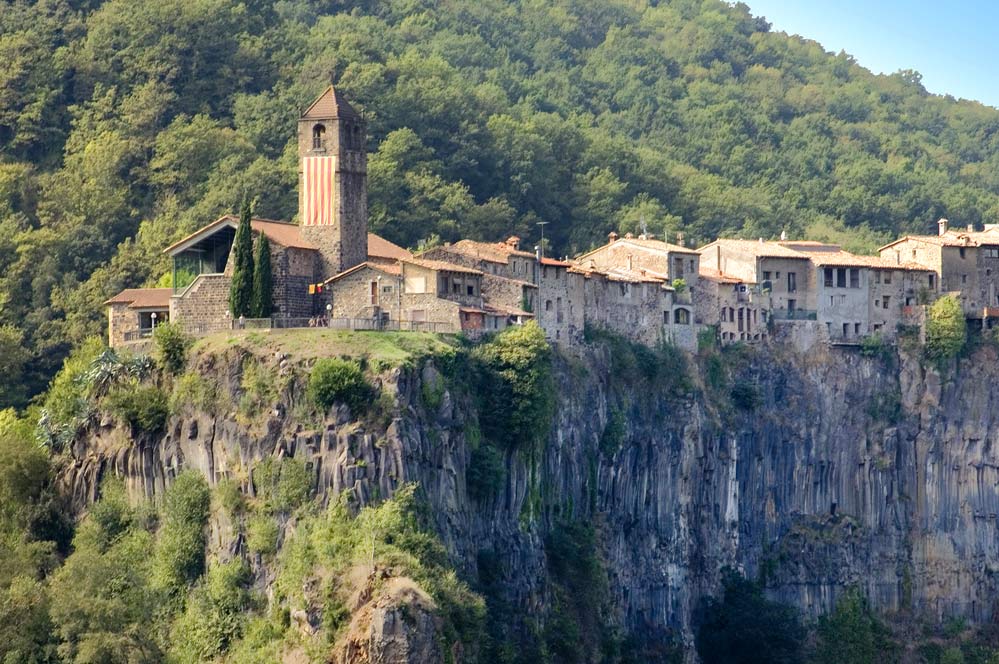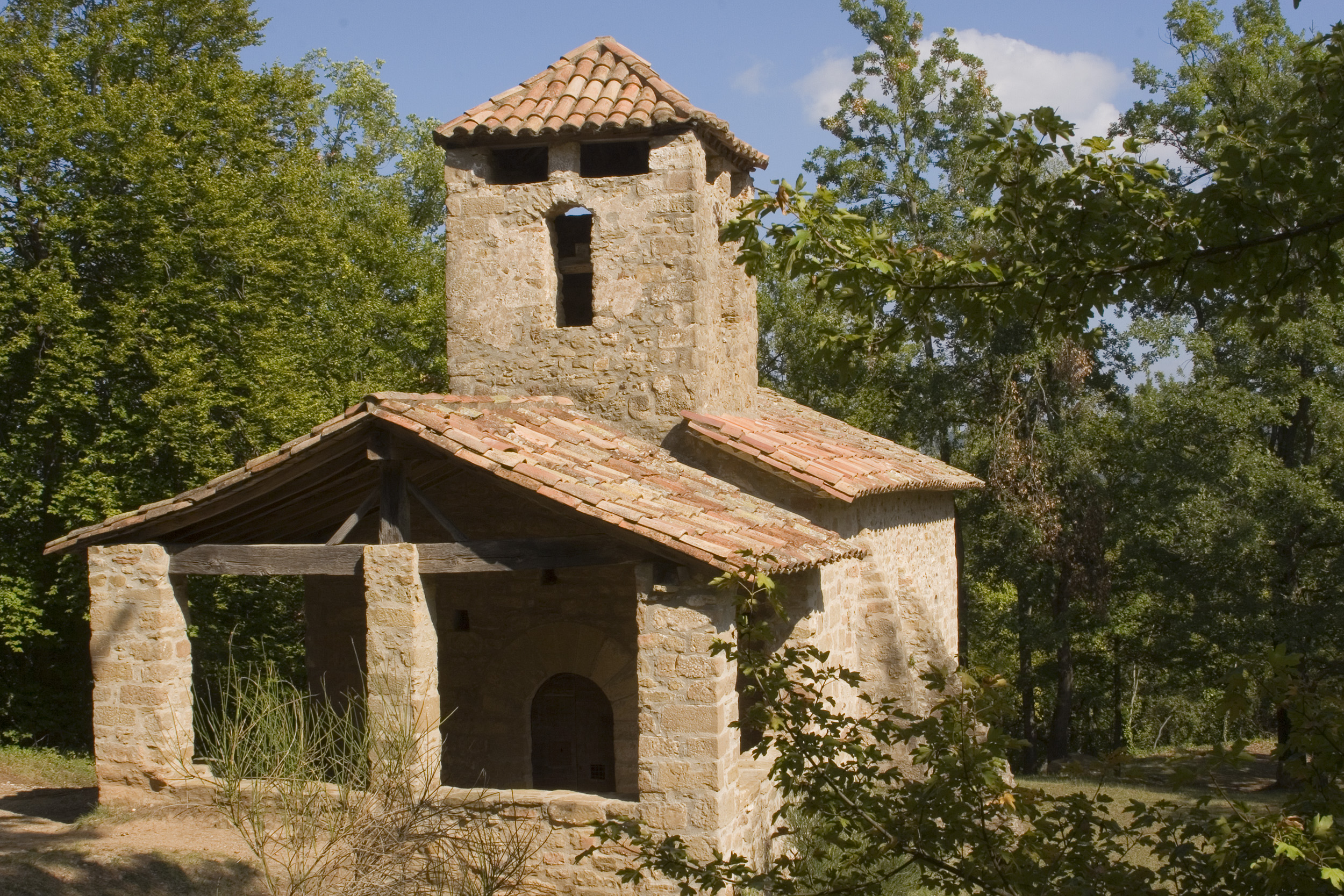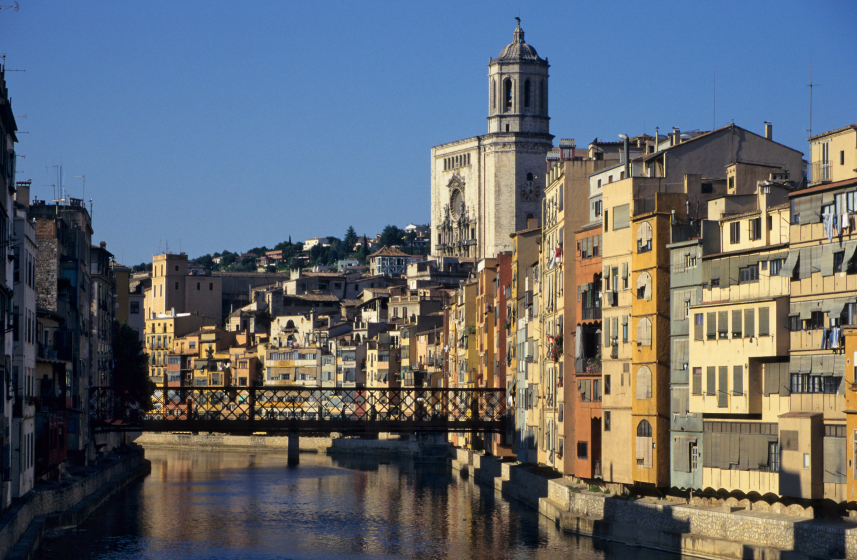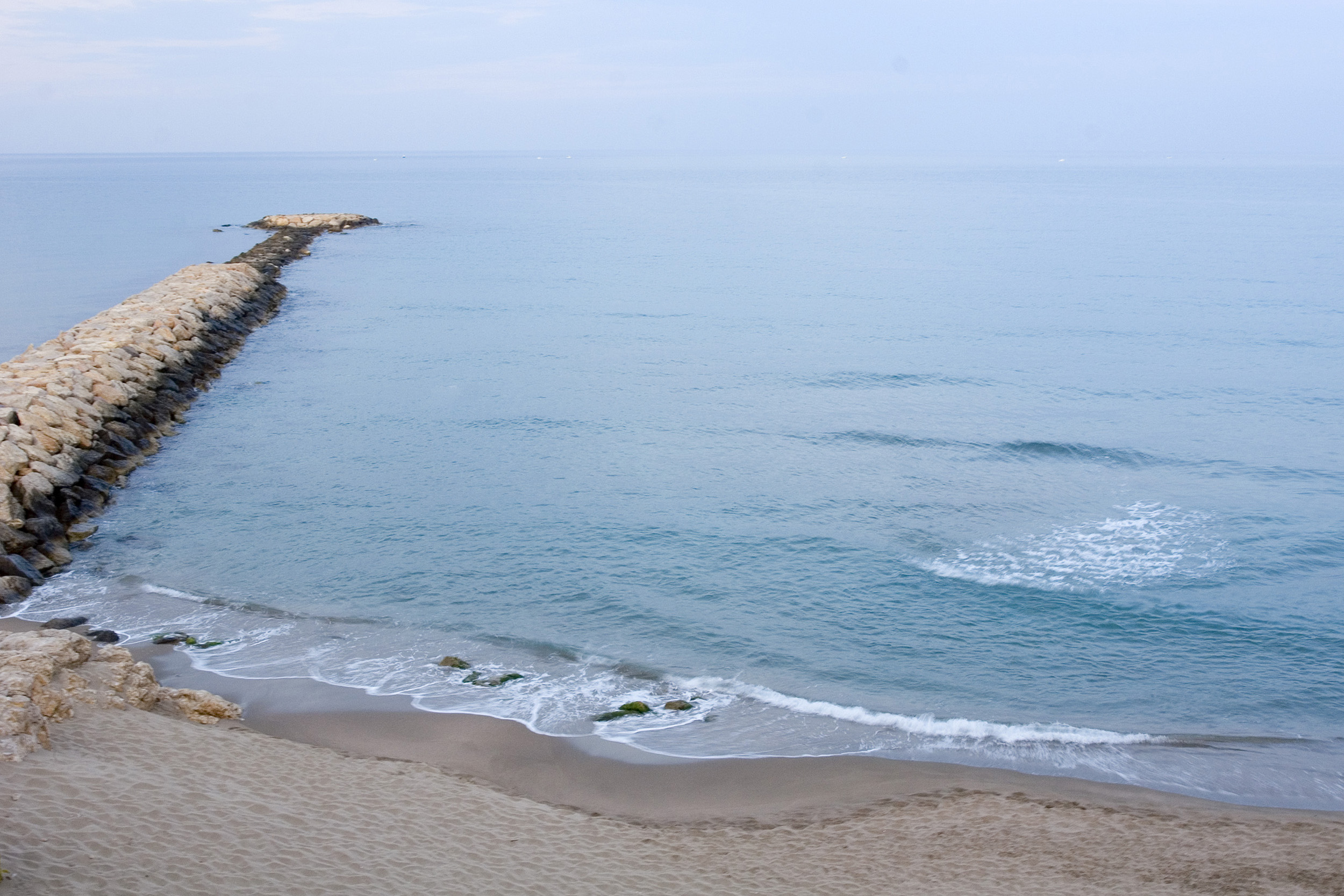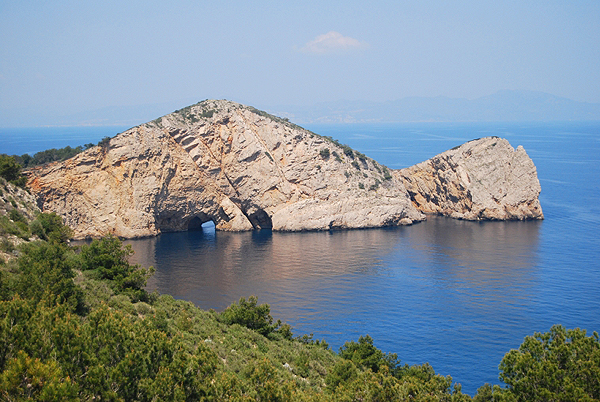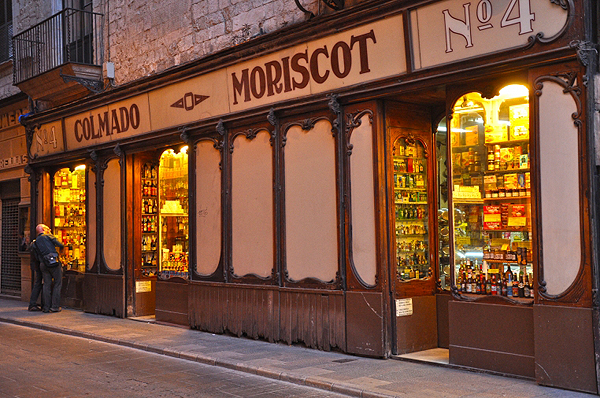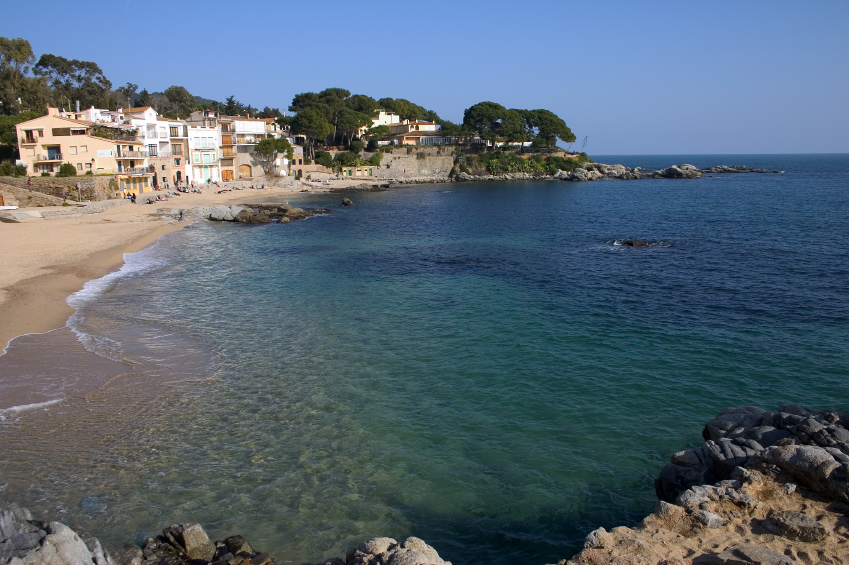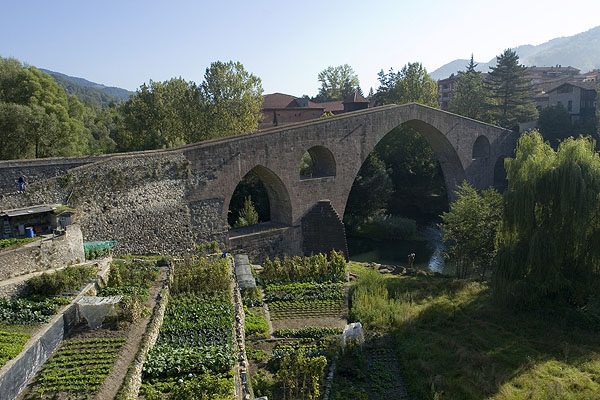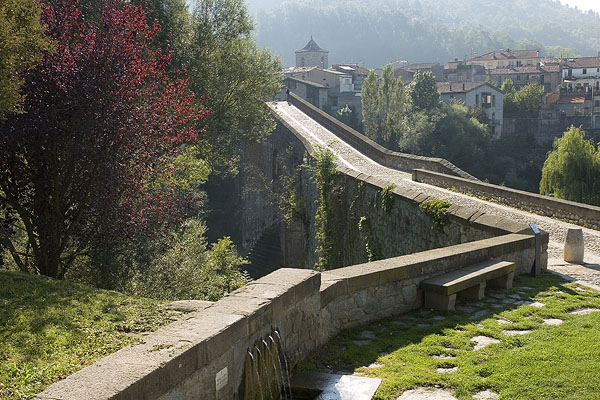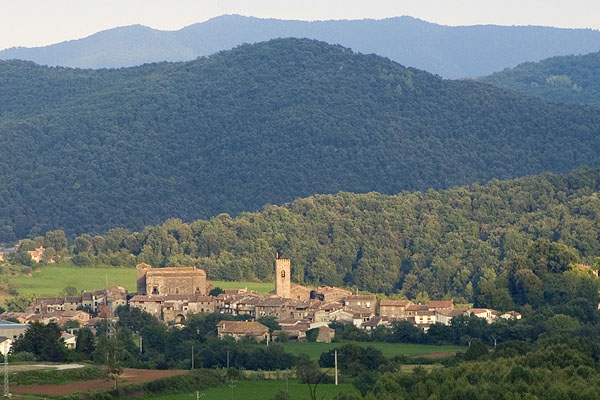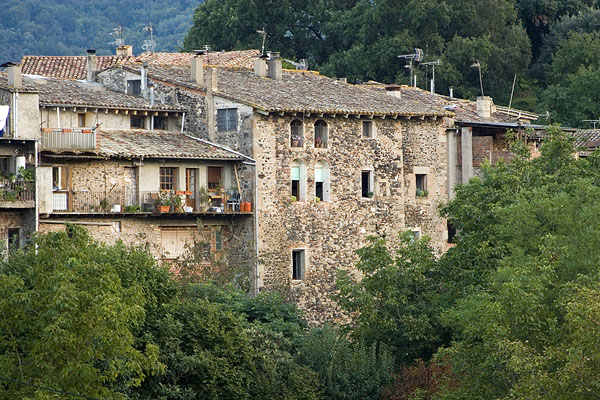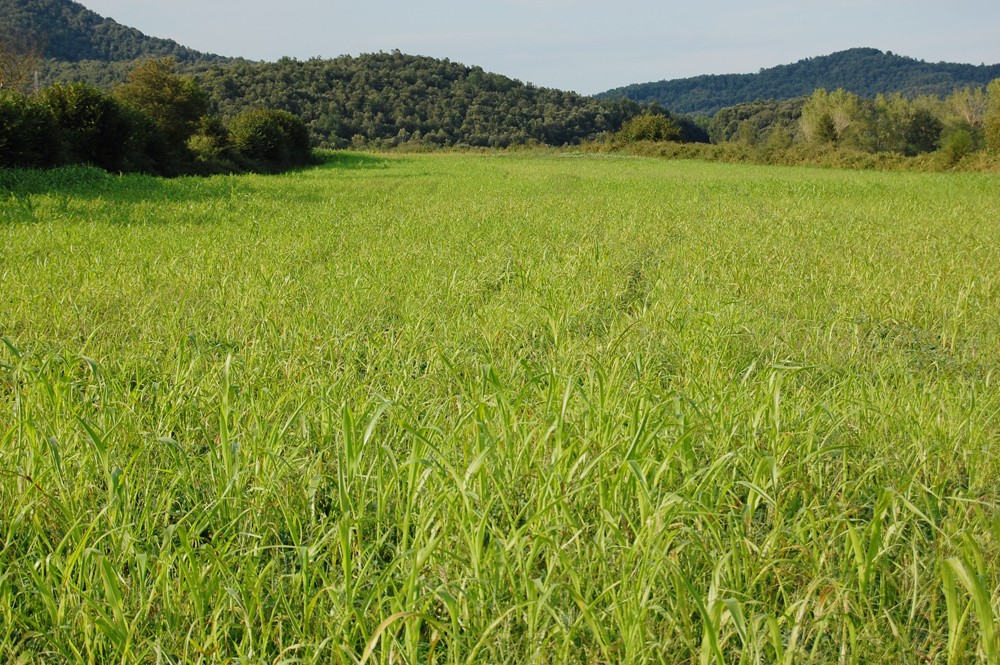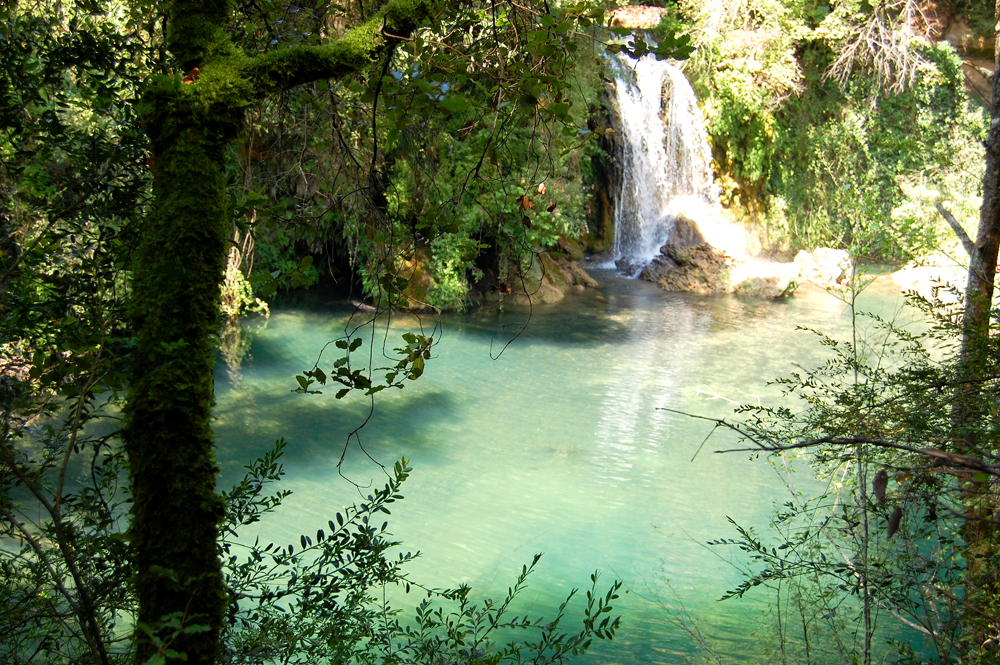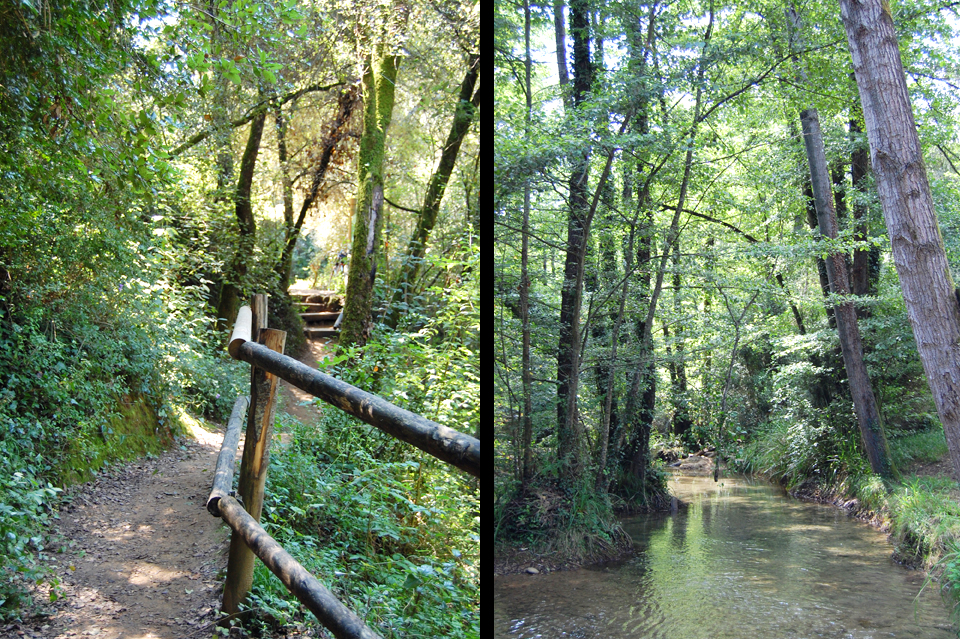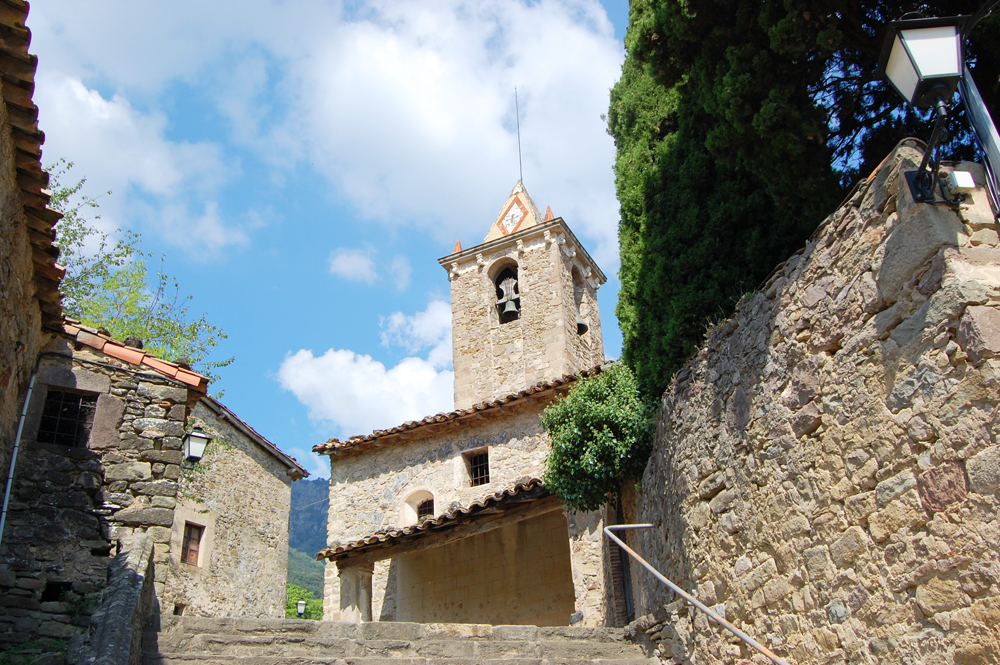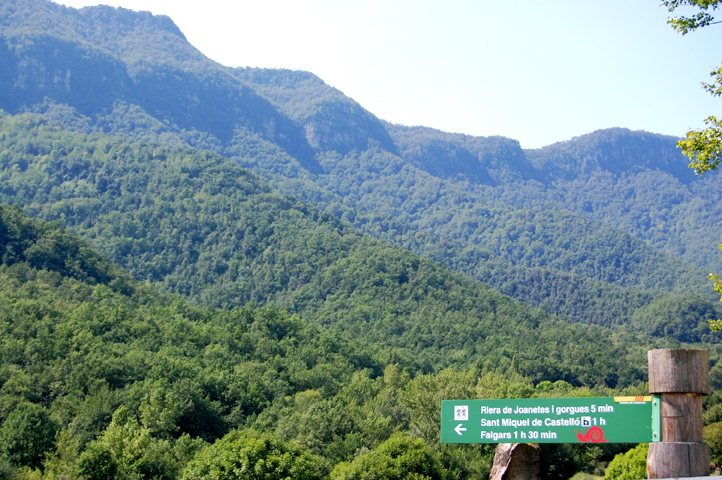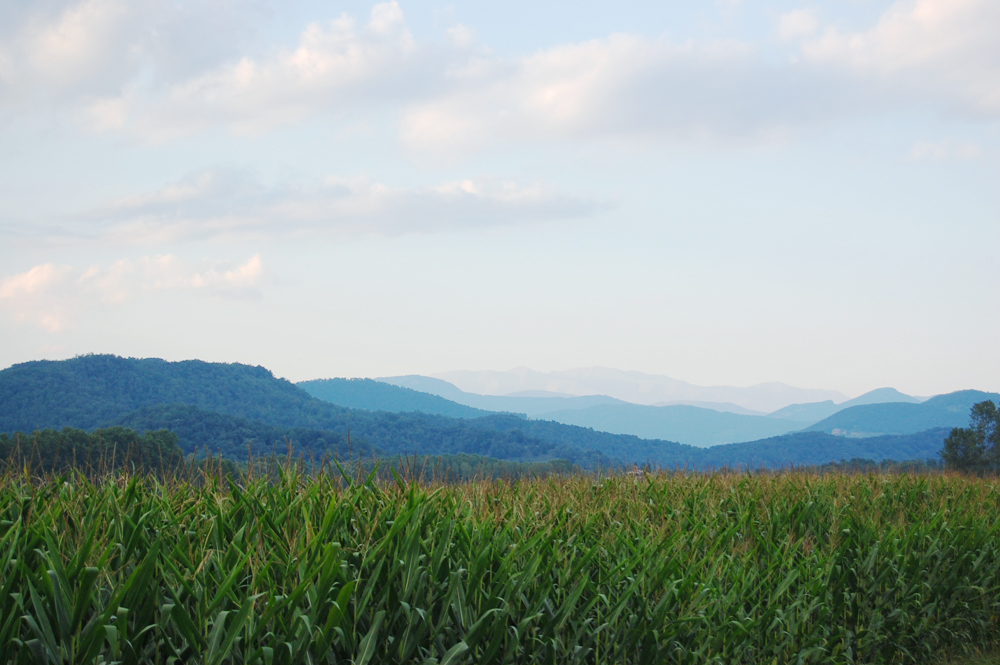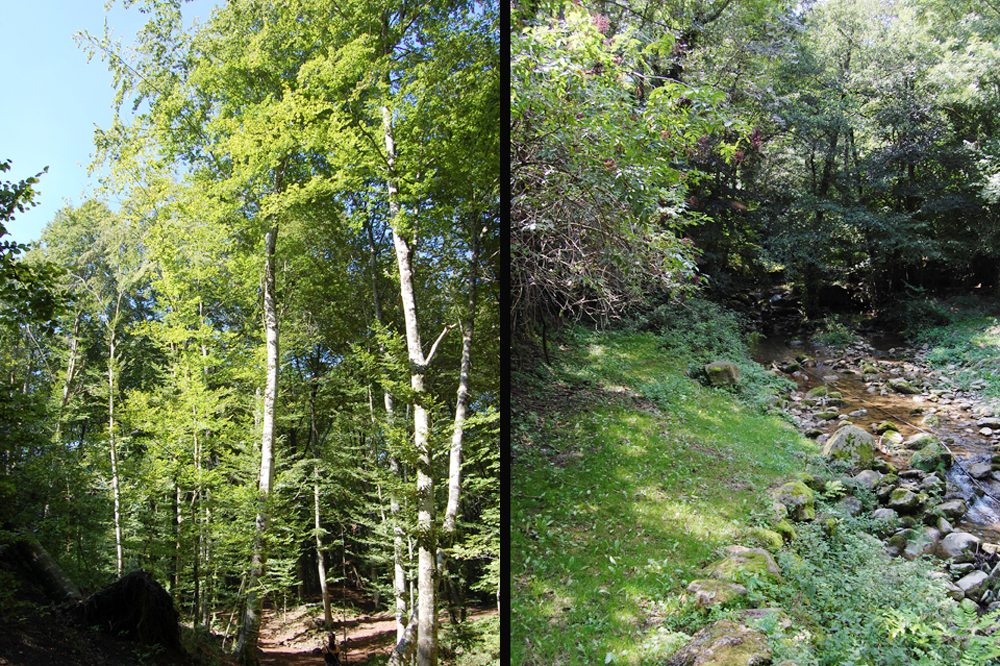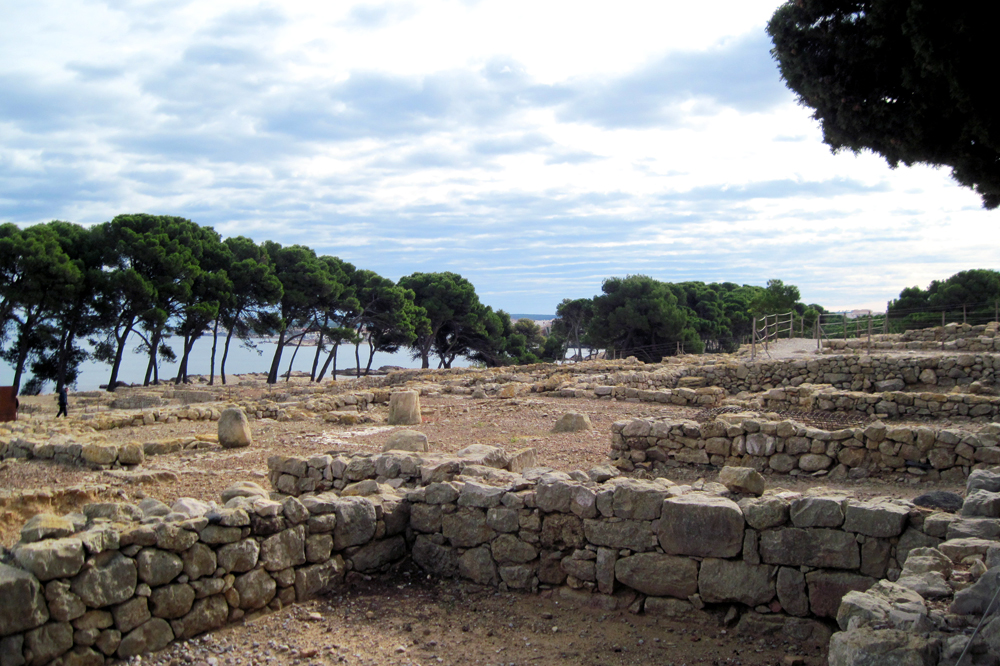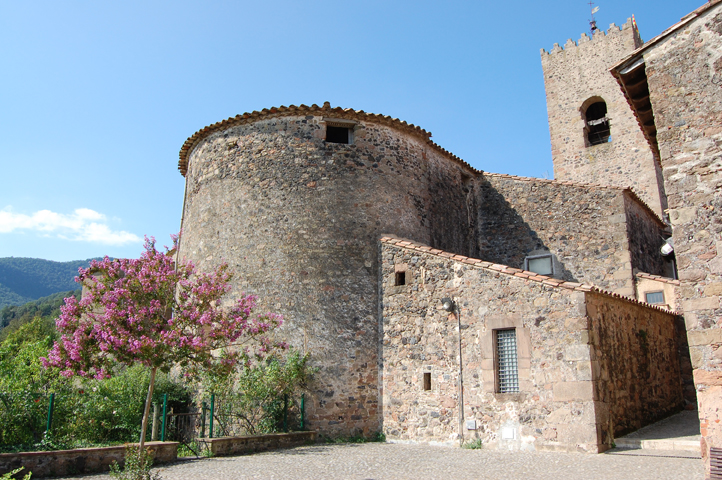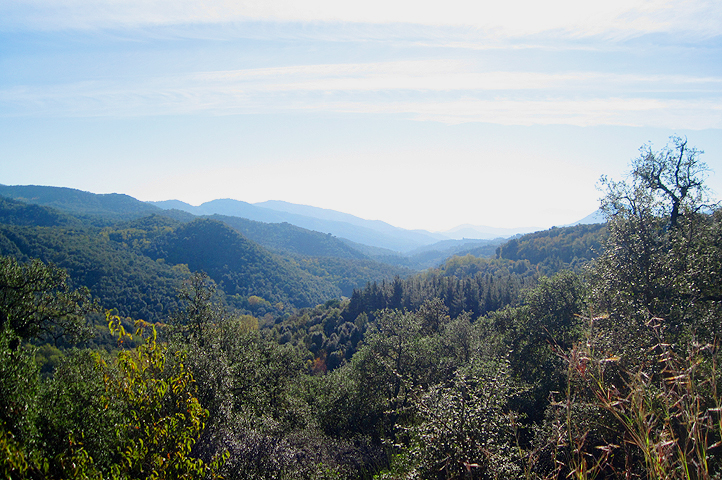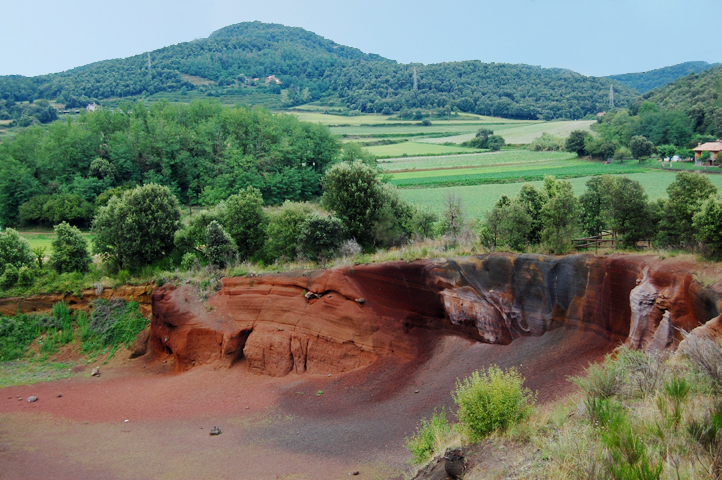Capital of the province of the same name, Girona (Gerona) makes for a very rewarding day trip destination. The main attraction is exploring the medieval town within the massive old city walls, the cathedral and “El Call,” as the ancient Jewish quarter is known. Along the way, flanked all the while by the River Onyar, there are interesting, sophisticated small shops selling fashion wear and accessories and excellent café-restaurants with terraces.
The county of La Garrotxa in Girona province is one of the most rewarding rural destinations in all of Spain.
La Garrotxa has achieved a successful and prosperous balance of cattle rearing, tourism and complementary services. It’s one of those places where people look especially healthy and the local gastronomy and environment may have a lot to do with that.
It’s especially worth emphasizing the accessibility of the walks in this area. Other areas of more dramatic scenery, such as the mountains of Picos de Europa in northern Spain, may be breathtaking to behold, but steep for hiking and with few roads in.
La Garrotxa is not only very beautiful, the walking is much easier, and you can enjoy many days of varied exploration. And there’s a lot to discover:
Read more about this region in our holiday guide to Garrotxa.
Vall d'en Bas
In this spectacular valley you will find ancient hamlets, little restaurants atop hills and great walks.
Fageda d’en Jordà
An enchanted beech forest with signposted walks. One forest trail of four hours goes round two volcano craters. You can go horseriding in Faigeda d'en Jordà, where the autumn leaf fall is an event in itself.
The volcanoes
By the prosperous capital of Olot, La Garrotxa’s rolling wooded hills hide a curious surprise. Volcanic cones – forty of them – sculpt the landscape, along with solidified basaltic lava. The volcanoes have long been dormant and forest has grown up around and even within their craters. The crater of Santa Margarida even has a longstanding Romanesque hermitage built at its centre.
Santa Pau
The marvel of the volcanic zone. This beautifully preserved village of is as impressive as the six-kilometre lava flow left by its volcano, El Croscat, Hot air balloon rides are available here. Here you can get right into the wooded craters of the old volcanoes.
Castellfollit de la Roca
Walking around the spectacular Castellfollit de la Roca is an unbelievable experience. This narrow village was raised on cliffs of lava that poured from one of the volcanoes thousands of years ago.
Besalú
Designated historical national heritage in 1966. You enter the village across the Fluvia River over a 12th century Romanesque bridge, and the centre has medieval buildings including St Pere Church, consecrated in 1003, an 11th Century mikva–Jewish baths used for ritual purification–and the remains of a synagogue dating back to the same period. The village’s most famous son, the Count of Besalú who went by the name of Wilfred the Hairy, is credited with the unification of Catalonia no less.
St Joan de les Abadesses
Catalonia’s rural story continues just west of Olot, at the gateway to the high mountains, with the magnificent Romanesque monastery of St Joan de les Abadesses. Here, where La Garrotxa ends, the Pyrenees begin.
MONTSENY
If the Pyrenees sounds remote, and you want a lovely mountain experience with easy access, in Montseny you will find a real treasure. It’s close to the coast in southern Girona, halfway between Girona town and Barcelona.
Montseny Natural Park and UNESCO biosphere reserve is without doubt one of the most special areas in north-east Spain.
It is said that hiking in Spain was born in Montseny, hundreds of years ago. Walking trails, signposted and normally circular, are exciting without being too strenuous. There is tremendously healthy Mediterranean oak and pine forest and yet also an exquisite alpine feel to the mountain area, with spruce and yew, too.
The climate’s mildness reminds you that the sea is only half an hour away.
A road winds deep, deep into the massif of high mountains with occasional settlements along the way, but it is walkers who are spoilt for choice here. There are trails galore and leisure areas. The road into Montseny is clearly signposted from the C-25 highway to Vic.
The mountain range is thickly forested with a wonderful diversity of trees and flowers, watered by rivers and countless natural springs.
The area is one the richest in aquifers in all of Europe. Once inside, the scenery and walking are especially pretty, thanks to the water that springs and flows everywhere, feeding profuse vegetation and flowing down in rivers and streams.
The peaks of Matagalls or Turo de l´Home have particularly unforgettable views, although you’ll find the natural beauty of Montseny everywhere you go, even if you don’t enter the National Park itself. It’s best enjoyed on foot.
COSTA BRAVA
The northern reaches of Catalonia’s rugged coast is our recommendation for beaches and days out. We’re less than enamoured of the overdeveloped southern coast (Lloret de Mar et al), but the Alt Empordà further up the coast gives you sandy beaches in a well-conserved seaside town at Empuriabrava, and picturesque Cadaqués. Near Cadaqués, Cap de Creus Natural Park contrasts bare rock and cliffs with creeks and deep, blue sea.
Empuries
Up the coast from Cap de Creus Natural Park is a location that combines archaeology, beaches and smart village restaurants. Empuries gives you two ruined cities in one: the original Greek city was enlarged by the Romans and both lie right by the sea. From here a lovely stroll along beaches and through trees brings you to Sant Marti coastal village and excellent restaurants with terraces in the square.
Beaches
There are countless beaches to choose from and enjoy sand, sun and swims. So many, in fact, that you might appreciate special recommendations. Here are the Rustical tips 30 minutes for four lovely spots:
• Platja Castell isn’t even on the maps. It’s exceptional in being free of buildings on the notoriously well developed Costa Brava. Search it out just north of Palamós at Google Maps GPS: 41°51'45.4"N 3°09'22.1"E
• Platja Llafranc at Palafrugell. Google Maps GPS: 41° 53′ 38.7″ N, 3° 11′ 44.4″ E
• Platja Aiguablava, south of Begur: Google Maps GPS: 41°56'04.9"N 3°12'53.1"E
• Platja Sa Tuna at Begur, not so much for the beach as for the complete experience here of coves, cliffs, crystalline waters, fishing boats, Sant Sebastià lighthouse, and natural beauty of the coast. Google Maps GPS: 41°51'45.4"N 3°09'22.1"E
Coastal garden route
Garden-lovers can visit 3 botanical gardens separated by just ten minutes between Blanes and Lloret del Mar. Nicely laid out and shot through with sea views, they overhang the Mediterranean like flowery balconies. Expect to pay a 5 € or 6 € entrance fee.
• MariMurtra, Blanes
Our favourite is this marvellous array of gardens divided into tropical, temperate and Medieterranean zones, in a spectacular position. Blanes beach is long, sandy and very popular. Googlemaps GPS: 41°40'34.8"N 2°48'04.7"E
• Pinya de Rosa, Blanes
If cacti are your thing, this is the place for you. Otherwise, you might prefer to skip these gardens and continue to the next. Google Maps GPS: 41°41'10.4"N 2°48'39.7"E
• Santa Clotilde, Lloret de Mar
Italianate gardens walking distance from Lloret de Mar town centre. Take drinks or a picnic as there’s no café-bar here. Google Maps GPS: 41°41'35.2"N 2°49'28.2"E
In this area, we liked the beach at Cala Santa Cristina (by Treumal Cove). These golden sands are below the Santa Cristina Hermitage, which we don’t include in our recommendations as it’s usually closed.
If you want to explore a little further up the coast, you might enjoy the old quarter of Tossa de Mar with its medieval walls and defensive towers.
Dalí Castle-Museum, Figueres
Less than half an hour inland from beaches is Figueres, birthplace of Salvador Dalí. At the Dalí Museum (where he is buried in a crypt), you can see an extensive collection of paintings, sculptures and furniture representing the artist’s unique imagination.
Lake Banyoles
Just 12 km from Girona town, Banyoles is Catalonia’s largest lake, fed naturally by subterranean channels. It’s a very inviting destination for a day out, especially in summer when walks shaded by the branches of waterside trees can be combined with boat trips, canoeing or swims. Look for a zone reserved for bathers called La Casita de Madera, which has a lifeguard.
Read more about how to spend a day out at this wonderful natural lake: A day out at Banyoles lake
Art in nature: Can Ginebreda
Near Banyoles lake, at Sant Miquel de Campmajor, Bosc Can Ginebreda is another magical wood, this time thanks to the free-standing sculptures by artist, Xicu Cabanyes. The pieces are quite exuberantly sexual. Xicu, who has his studio right in the very woods, has been making sculptures here since 1972. You’ll also find an interesting restaurant.
Waterfalls and a natural pool for wild swimming
There are a number of these in Girona, but we have a favourite: La Fordada de Cantonigròs, between Vic and Olot Google Maps GPS: 42°02'27.0"N 2°23'41.5"E. It has the Wow! factor.
BEST OF THE REST
The Pyrenees: Vall de Núria
Girona gives you the early Pyrenees and venturing further north into the higher valleys and mountains presents you with opportunities to discover waterfalls, go wild swimming and enjoy some beautiful scenery. Vall de Núria is a high Pyrenean valley accessible only via a rack railway. If you head up north into the Pyrenees to the mountain resort of Vall de Núria, you’ll find a high altitude experience of snow and skiing in the wintertime, and walks and activities in a high green valley with lakes in the summer.
From Ribes de Freser, a rack railway rises 1,000 metres during a 12.5 km ride to your destination. Peaks all around rise up to nearly 3,000 m. The valley has good facilities, including fun activities for children in a natural play park. Hiking is superb for adults, such as the “Old Road” (Cami Vell) once trod by pilgrims coming to the Sanctuary here. Other walks from Vall de Núria include:
• Descent to Queralbs (2 hrs 20 mins - one way) and continue to Ribes de Freser.
• Refuge of Coma de Vaca (3 hrs - one way): enjoy the long pretty alpine valley of Coma de Freser.
• Hike up the peak of Puigmal (3 hrs - one way): the highest peak in the area.
• Refuge of Ulldeter (5 hrs) was the first mountain refuge ever built in Spain: beautiful scener.
Mare de Deu del Mont
From the summit of this mountain you can see virtually the entire province of Girona. It is surmounted by a sanctuary, destination of local pilgrimages in March and April from nearby villages such as Crespià, Beuda, Besalù and Cabanelles, but you can also drive up. Due west of Figueres. Google Maps GPS: 42°15'30.3"N 2°42'28.9"E
Monkey sanctuary
10 km south of Girona town, MONA is a rescue centre where chimps and macaques live in a natural environment on the banks of the Rover Onyar. If you want to visit, please note that advance booking is essential. The two-hour guided visit is often available in English or French. Tel 972 477618 or submit a visit request. Google Maps GPS: 41°53'53.84"N 2°49'0.19"E
Montsoriu Castle, Arbúcies, Montseny
A visit to the 15th century Gothic castle. El Castillo de Montsoriu is very unusual in that it is open to visitors while still in the process of restoration. Situated on a hill “like a proper castle” just south of Arbúcies at Google Maps GPS: 41° 47' 0.157"N 2° 32' 25.962"E
La Gabella, Arbúcies, Montseny
Montseny Ethnological Museum in the centre of Arbúcies narrates the human history of the magnificent mountain landscapes that you will get to know while you are on holiday here. Open 11 am – 2 pm & 5 pm – 7 pm Tue – Sun (Carrer Major, 6)
Roquer, Arbúcies, Montseny
Roquer is a dendrological garden of 150 trees and shrubs including Himalayan cedar and the biggest magnolia in Europe, whose circumference measures 3.92 metres. It can only be visited with a guide by previous arrangement with the Tourist Office [email protected] or during the Arbúcies Water Festival (last Sunday in April), or the Autumn Fair in October.
Bicycle hire
In Girona town, CicloTurisme cycling travel agency specialized in cycling tours and hiking. At Lake Banyoles and in Sant Hilari Sacalm, you can rent electric bicycles called burricletas. For more info on this eco-friendly transport: http://www.burricleta.com/en
Biking and hiking trails
The via verde (green route) from Girona to Olot is a former railway, reconditioned for cyclists. If you just want to do part only, we recommend the section between Sant Feliu de Pallerols to Olot. Another major trail, which follows the course of the River Ter for a total of 204 km, passes north of Sant Hilari and via Anglès on the way to Girona. Link to Ruta del Ter route map: https://www.rutadelter.cat/
Sant Hilari Sacalm
North of Arbúcies, Sant Hilari is known as the village of the hundred springs and it is water that has brought wealth for over a century, first in the form of spas and more recently as bottled mineral water, such as “Font Vella”. Walk around and you’ll come across a dozen fountains spouting pure drinking water. The GR-178 hiking trail is known here as the Route of Serrallonga, for the woods and mountains were once the haunt of a famous bandit of that name. Today, Sant Hilari village celebrates a festival every September called “Torna Serrallonga” in which bandits with blunderbusses are much in evidence. Other facilities include 7 restaurants, an indoor swimming pool and the hire of burricletas: electric bicycles complete with panniers.
Vic
Vic (population 38,000) to the west is interesting for a walking circuit via medieval architecture and a Saturday market held in its vast main square. The most ancient building is Roman, a well-preserved temple dating back to the 2nd century AD.
FOOD AND DRINK
The province of Girona in northern Catalonia is famed for producing the world’s very best restaurants, starting with El Bulli and now El Celler de Can Roca. Fortunately for your wallet, you don’t need to book here to eat extremely well.
Girona’s two major geographical features of mountainous interior and Mediterranean coast are reflected in its gastronomy.
From the mountains, which join the region with France at the Pyrenees, come the meat and haricot bean stews called cassoulets and a variety of cured sausage, such as butifarra, salchichón and fuet.
This is one place where the ducks you see are edible and a feature on many menus.
Other local specialities are the escudella “soups” which are really meals in themselves (the escudella de Pagès is particularly filling and served in two parts); bou estofat (a variation on beef bouguignon); beef stew with peas; and chicken with crayfish.
In Girona town, there are seasonal food events, such as Rambleja i Tasta, at which you can sample dishes at stalls on the main promenade that runs parallel with the river.
Gastronomy fairs are held all over the interior. In Banyoles, it is garlic and pumpkin; in Ripoll, lamb and wild mushrooms; in Arbúcies, game and chestnuts are added to the wild mushrooms; at L’Estartit, apples are the star of the show. Girona is a major exporter of apples and pears to the rest of Spain.
A special culinary delight hunted down in Girona’s forests is the prized truffle.
Find out more in our article: Catalonia truffles
Wherever you go, as a taster to awaken the appetite, it is typical for you to be given a little bread with alioli, which is a garlic mayonnaise.
The Costa Brava is a generous supplier of seafood and fresh fish.
From the port of Palamos come special red prawns (gamba roja de Palamos), while l’Escala specializes in anchovies.
You’ll also find cod; Dublin Bay prawns (cigalas); lobster with clams (bogavante con almejas); tuna fish stew with snails (patacó tarragoní); and suquet, which is a rice made with squid’s ink.
Desserts don’t occupy much of the menu, but in Girona town do look out for xuxos, which are sugared wraps of deep-fried dough filled with sweet cream. Chocolates are another favourite with the locals.
In Girona town, the Lleó square retail food market (Mercat del Lleó) has the very best in fresh produce and is interesting just to walk round.
When shopping for food and drink anywhere in Girona, keep an eye out for the outstanding delicatessen called agrobotigas.
Girona has wines with Denomination of Origin. The Greeks planted the first vines by the coast and today D.O. Empordà-Costa Brava represents Catalonia’s most northerly vineyards. Chief among them are the rosés and Garnacha dessert wines, although you’ll also find full reds and a very palatable Novell.
It’s impossible make a full shortlist of good restaurants in Girona province and we prefer to make personalized recommendations based on the experience of the Rustical Travel team and holidaymakers.
Do please tell us if you have other good Girona restaurant tips to pass on!
• El Trull d'en Francesc
Placeta de l'Oli, 1, 17723 Boadella i les Escaules
T. 972 569 207
Google Maps GPS: 42°19'48.7"N 2°51'24.6"E
North of Figueres. The dining area overlooks a river.
• El Lloc Cafè Bistrot
C/Pi i Margall 11, 17600 Figueres
T. 872 21 20 42
Google Maps GPS: 42°16'02.7"N 2°57'56.7"E
Central in Figueres town
• Ca l'Enric
Ctra. de camprodon, s/n
N-260 Km. 91, 17813 La Vall de Bianya
T. 972 290 015
Google Maps GPS: 42°13'16.8"N 2°26'24.6"E
On the N-260 road between Olot and Saint Joan des Abadesses
• Restaurant Marangels
Can Quelot s/n, San Gregori,
T. 972 429 159
Google Maps GPS: 41°59'24.9"N 2°46'19.1"E
Just outside Girona town
• Restaurant Arnau “Can Perot”
Granollers de Rocacorba, near Sant Marti de Llémena.
T. 972 443 045
Google Maps GPS: 42°04'05.8"N 2°39'06.2"E
• Restaurant Can Tura
Sant Aniol de Finestres, NW of Sant Esteve de Llémena
T. 972 443 102
Google Maps GPS: 42°05'24.6"N 2°35'14.3"E
• Restaurant L’Esculapi
Plaça Major, 1, 17130 Sant Martí d'Empúries(by the beach)
T. 972 77 00 53
Google Maps GPS: 42°08'22.8"N 3°07'05.1"E
